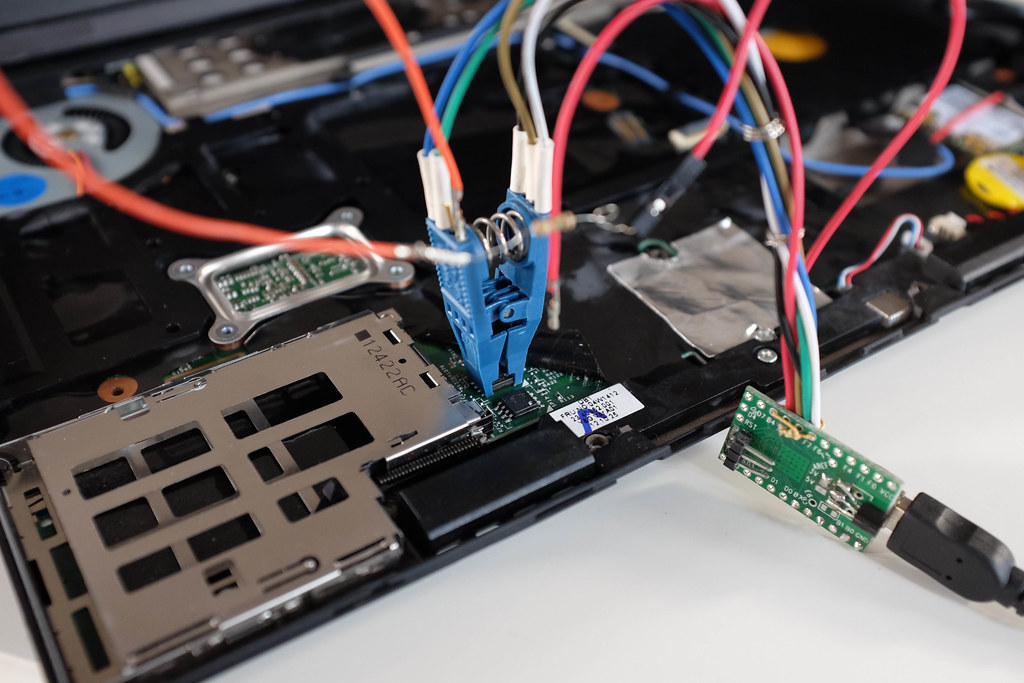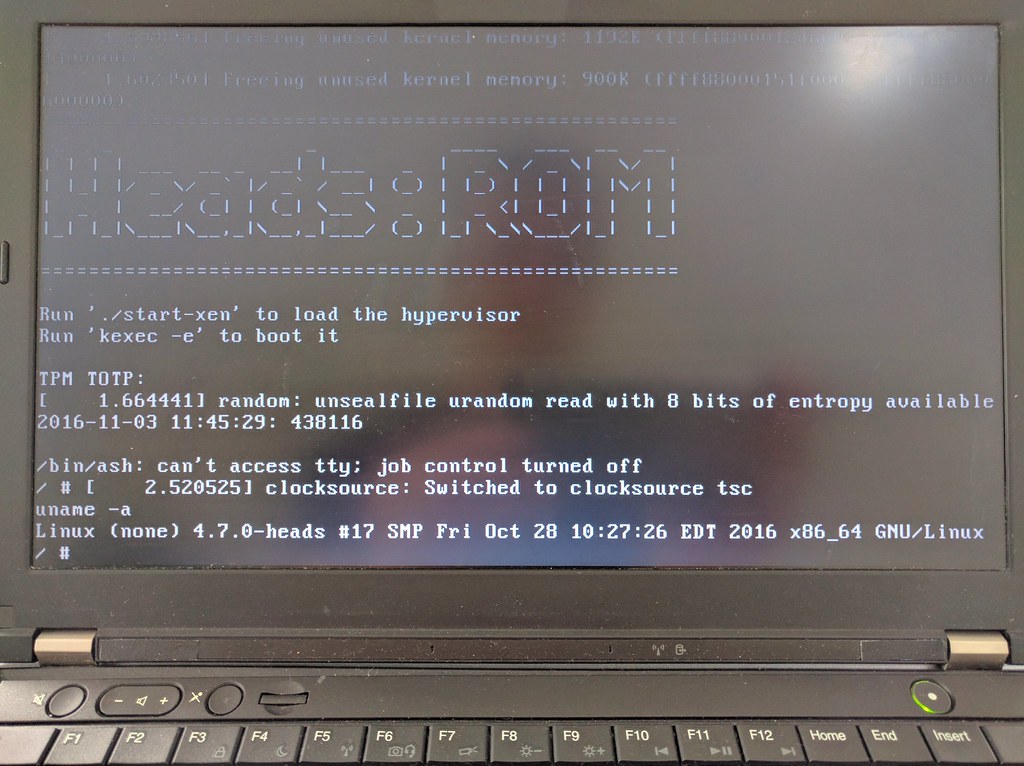Heads
Heads is an open source custom firmware and OS configuration for laptops and servers that aims to provide slightly better physical security and protection for data on the system. Unlike Tails, which aims to be a stateless OS that leaves no trace on the computer of its presence, Heads is intended for the case where you need to store data and state on the computer. It is influenced by several years of firmware vulnerability research (Thunderstrike and Thunderstrike 2) as well as many other researchers' work ("Hardening hardware and choosing a #goodBIOS" by Peter Stuge, "Beyond anti evil maid" by Matthew Garret, "Towards (reasonably) trustworthy x86 laptops" by Joanna Rutkowska, "LightEater malware seek GPG keys in Tails" by Kallenberg and Kovah, etc.).
 Heads is not just another Linux distribution -- it combines physical hardening of specific hardware platforms and flash security features with custom Coreboot firmware and a Linux boot loader in ROM. This moves the root of trust into the write-protected ROM and prevents further modifications to the bootup code. Controlling the first instruction the CPU executes allows Heads to measure every step of the boot process into the TPM, which makes it possible to attest to the user or a remote system that the firmware has not been tampered with. While modern Intel CPUs require binary blobs to boot, these non-Free components are included in the measurements and are at least guaranteed to be unchanging. Once the system is in a known good state, the TPM is used as a hardware key storage to decrypt the drive.
Heads is not just another Linux distribution -- it combines physical hardening of specific hardware platforms and flash security features with custom Coreboot firmware and a Linux boot loader in ROM. This moves the root of trust into the write-protected ROM and prevents further modifications to the bootup code. Controlling the first instruction the CPU executes allows Heads to measure every step of the boot process into the TPM, which makes it possible to attest to the user or a remote system that the firmware has not been tampered with. While modern Intel CPUs require binary blobs to boot, these non-Free components are included in the measurements and are at least guaranteed to be unchanging. Once the system is in a known good state, the TPM is used as a hardware key storage to decrypt the drive.
Additionally, the hypervisor, kernel and initrd images are signed by keys controlled by the user, and the OS uses a signed, immutable root filesystem so that any software exploits that attempt to gain persistence will be detected. While all of these firmware and software changes don't secure the system against every possible attack vector, they address several classes of attacks against the boot process and physical hardware that have been neglected in traditional installations, hopefully raising the difficulty beyond what most attackers are willing to spend.
Further reading
- Heads FAQ addresses some of the questions related to why does this project exist.
- Heads threat model goes into more detail about what classes of threats Heads attempts to counter.
- Installing Heads describes the steps for installing the modified firmware on a Thinkpad x230 or Chell Chromebook and setting up a reasonably secure OS like Qubes.
github.com/osresearch/heads- source code and issue tracking.

